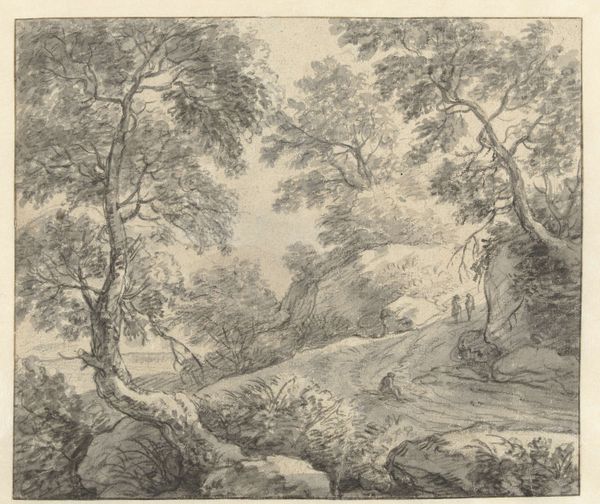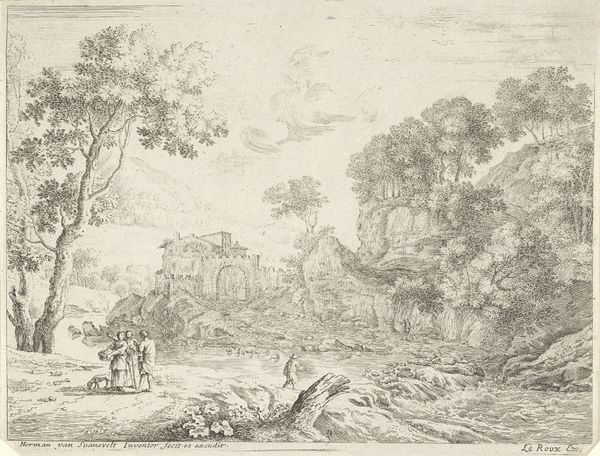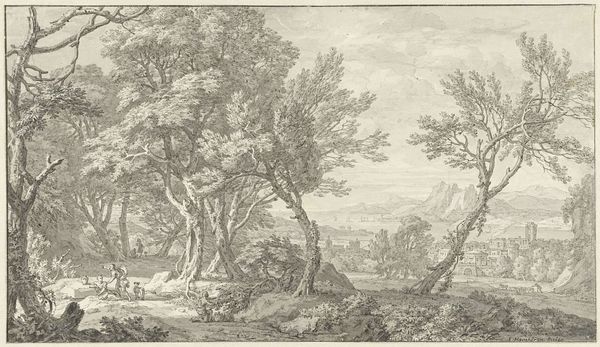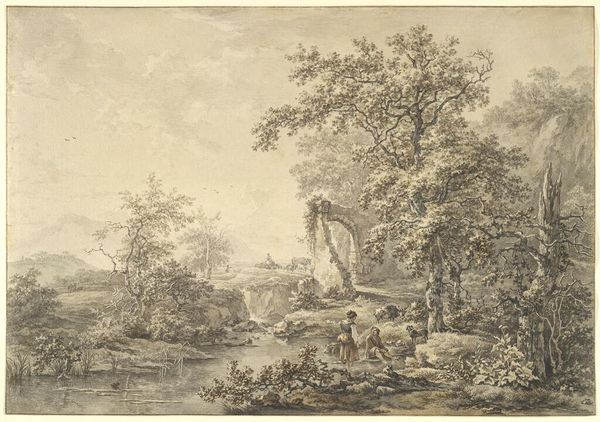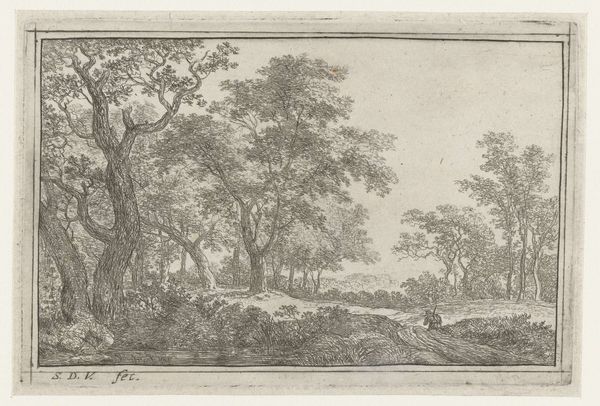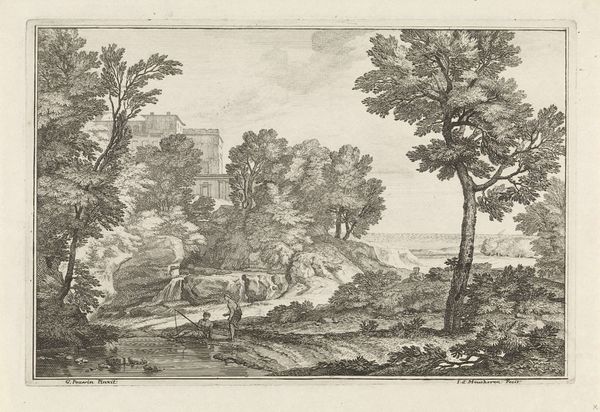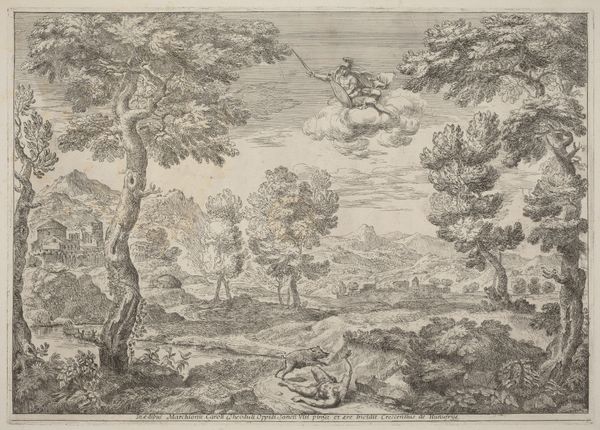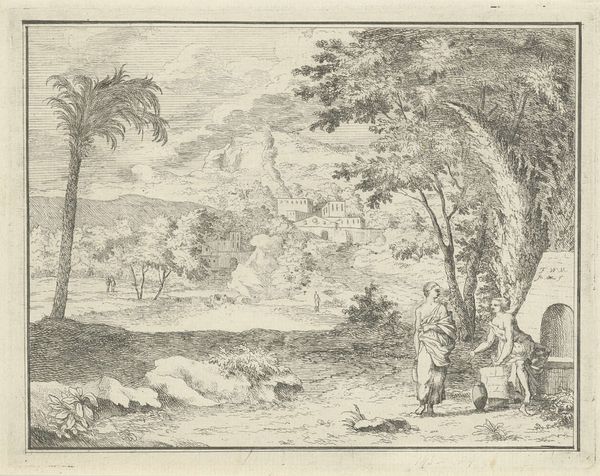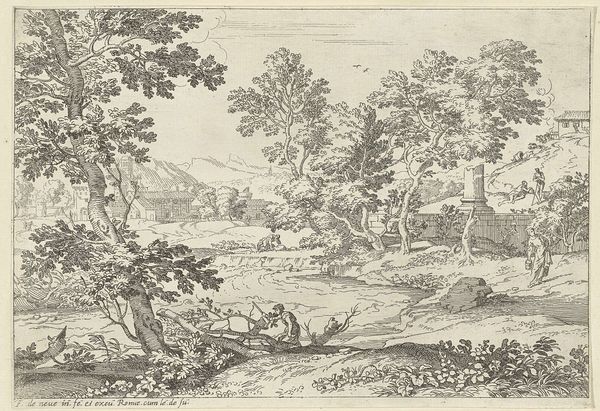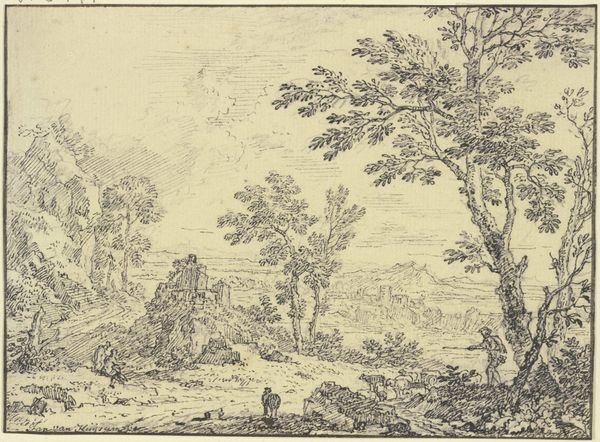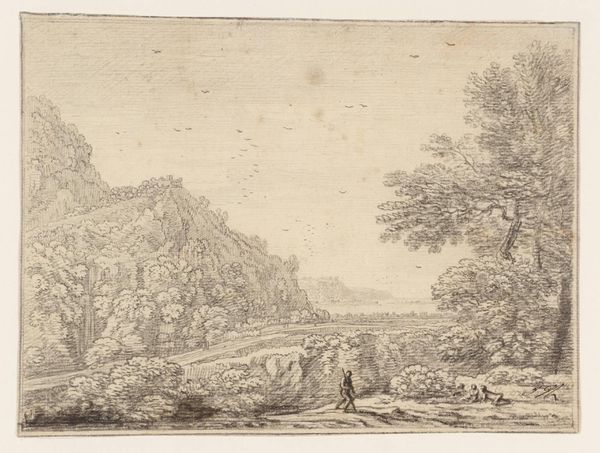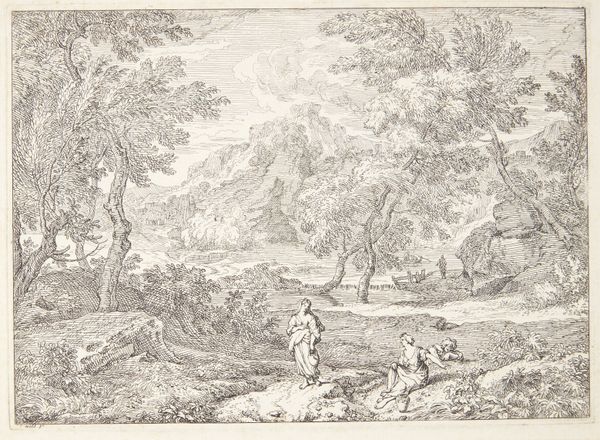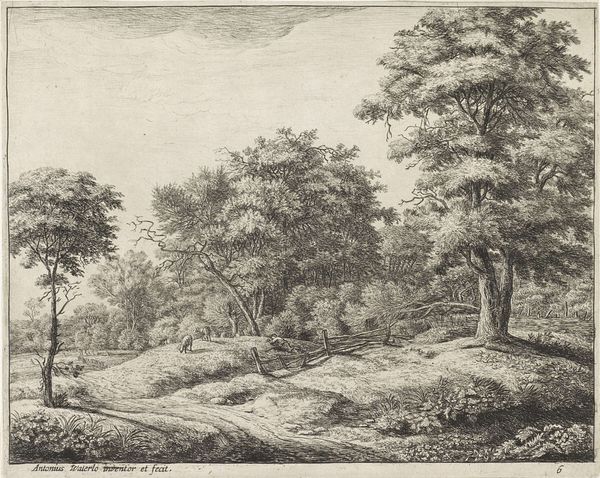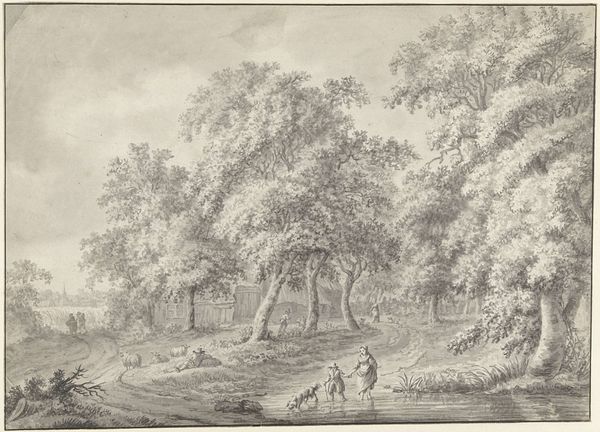
drawing, paper, ink, pencil
#
drawing
#
landscape
#
classical-realism
#
figuration
#
paper
#
ink
#
pencil
#
genre-painting
#
academic-art
#
nude
Dimensions: height 232 mm, width 339 mm
Copyright: Rijks Museum: Open Domain
Editor: This is "Arcadian Landscape with Shepherd and Bathing Women," a drawing by Jean Grandjean from 1778. It's executed in pencil and ink on paper. The scene feels incredibly serene, almost dreamlike, with the soft, muted tones and the lush vegetation. How do you interpret this work, seeing beyond the surface-level idyllic scene? Curator: It speaks to the enduring human fascination with a Golden Age, doesn't it? This pursuit of an idealized past is as pertinent to us today as it was in 1778. The very name 'Arcadia' is evocative; its symbolism taps into collective memories and yearnings for simplicity, harmony, and closeness to nature, doesn't it? What specific visual elements contribute to this sense of idealization for you? Editor: I'm struck by the figures: the shepherd seems at peace, almost one with the landscape. And the bathing women are classical, nude, and so very pure. There’s nothing provocative about it. Curator: Precisely! Their nudity becomes a symbol of innocence, an unashamed and harmonious part of the natural world. It reflects, I believe, a cultural desire to reconnect with a primal state, unburdened by social constraints. This reflects cultural values; for example, how might later Romantic painters view this imagery? Do you see hints of a pre-industrial, pre-urban dream life here? Editor: That makes sense. Compared to some later more dramatic landscapes, it definitely leans toward calm, even idealized order. The ruins of classical structures also emphasize this bygone Golden Age and make me nostalgic for something I never experienced! Curator: Indeed! Ruins are always symbolic of temporality. By placing them in his landscape, Grandjean acknowledges the fleeting nature of even the grandest civilizations, thereby emphasizing the permanence and solace offered by nature. Now, consider this: in what other eras do we see artists and audiences drawn to visions of the "golden age"? What purposes does this imagery serve? Editor: I see how that idea echoes across centuries and cultures. Thanks! It has given me a fresh understanding of how this landscape taps into something so profound about the human condition, the yearning for something more timeless and authentic.
Comments
No comments
Be the first to comment and join the conversation on the ultimate creative platform.
